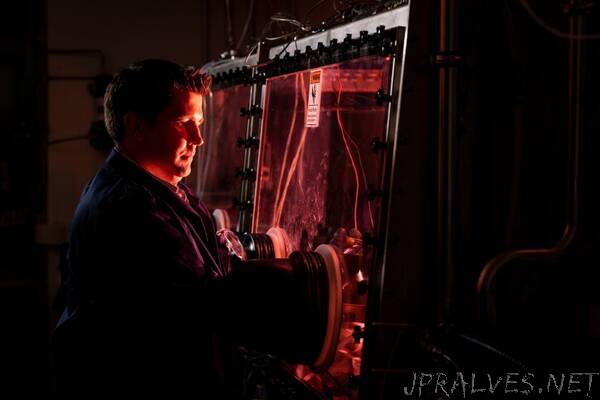
“A nuclear power plant produces 8000 times more power than fossil fuels and is environmentally friendly, but when accidents do occur, they have major repercussions, such as the 1986 Chernobyl disaster. Nearly 100 people died either in the accident or through radiation sickness in the years following.
BYU professor and nuclear engineering expert Matthew Memmott and his colleagues have designed a new system for safer nuclear energy production: a molten salt micro-nuclear reactor that may solve all of these problems and more.
The standard nuclear reactor used in America is the Light-Water Reactor. Uranium atoms are split to create energy, and the products left over will radiate massive amounts of heat. They are kept in solid fuel rods, and water is run through the rods to keep everything cool enough. If there is not enough of a flow of cooling water, the rods can overheat, and the entire facility is at risk for a nuclear meltdown. Memmott’s solution is to store these radioactive elements in molten salt instead of fuel rods.
“Nuclear energy can be extremely safe and extremely affordable, if done the right way,” Memmott said. “It’s a very good solution to the energy situation we’re in because there are no emissions or pollution from it.”
In Memmott’s new reactor, during and after the nuclear reaction occurs, all the radioactive byproducts are dissolved into molten salt. Nuclear elements can emit heat or radioactivity for hundreds of thousands of years while they slowly cool, which is why nuclear waste is so dangerous (and why in the past, finding a place to dispose of it has been so difficult). However, salt has an extremely high melting temperature — 550°C — and it doesn’t take long for the temperature of these elements in the salt to fall beneath the melting point. Once the salt crystalizes, the radiated heat will be absorbed into the salt (which doesn’t remelt), negating the danger of a nuclear meltdown at a power plant.
Another benefit of the molten salt nuclear reactor design is that it has the potential to eliminate dangerous nuclear waste. The products of the reaction are safely contained within the salt, with no need to store them elsewhere. What’s more, many of these products are valuable, and can be removed from the salt and sold.
Molybdenum-99, for example, is an extremely expensive element used in medical imaging procedures and scans that can be extracted. The United States currently buys all of its Molybdenum-99 from the Netherlands, but with this reactor it can easily be made within the country, making it much more accessible and affordable. Cobalt-60, gold, platinum, neodymium, and many other elements can also be taken out of the salt, resulting in potentially no nuclear waste.
“As we pulled out valuable elements, we found we could also remove oxygen and hydrogen,” Memmott said. “Through this process, we can make the salt fully clean again and reuse it. We can recycle the salt indefinitely.”
A typical nuclear power plant is built with a little over one square mile to operate to reduce radiation risk, with the core itself being 30 ft x 30 ft. Memmott’s molten salt nuclear reactor is 4 ft x 7ft, and because there is no risk of a meltdown there is no need for a similar large zone surrounding it. This small reactor can produce enough energy to power 1000 American homes. The research team said everything needed to run this reactor is designed to fit onto a 40-foot truck bed; meaning this reactor can make power accessible to even very remote places.
Others who helped with this project are BYU professors Troy Munro, Stella Nickerson, John Harb, Yuri Hovanski, Ben Frandsen, and BYU graduate student Andrew Larsen.
Memmott uses the analogy of a silicon chip to compare the abilities of this new reactor with the old one. When computers were first invented it took a giant vacuum tube controlling electron flow and an entire room to run a very limited, very simple computer. We no longer use that technology though because someone invented a silicon chip, which allowed technology to advance to the tiny and efficient devices we have today. The silicon chip fixed the issues with the early computers, and this molten salt reactor can fix the issues with the current nuclear reactor.
“For the last 60 years, people have had the gut reaction that nuclear is bad, it’s big, it’s dangerous,” Memmott said. “Those perceptions are based on potential issues for generation one, but having the molten salt reactor is the equivalent of having a silicon chip. We can have smaller, safer, cheaper reactors and get rid of those problems.””
